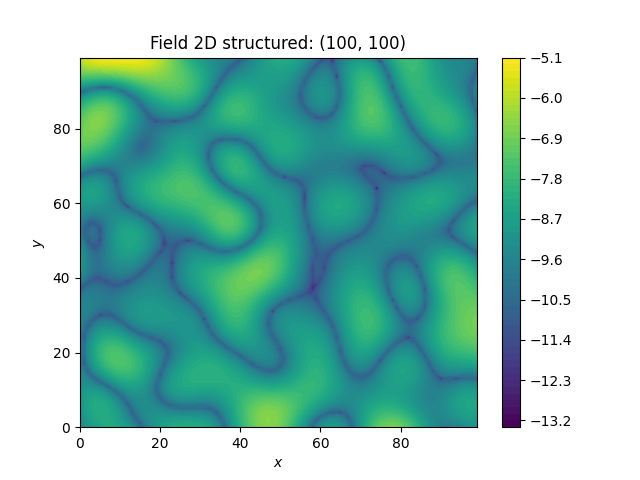Note
Go to the end to download the full example code
Combinations
You can combine different transformations simply by successively applying them.
Here, we first force the single field realization to hold the given moments, namely mean and variance. Then we apply the Zinn & Harvey transformation to connect the low values. Afterwards the field is transformed to a binary field and last but not least, we transform it to log-values.
We can select the desired field by its name and we can define an output name to store the field.
If you don’t specify field and store everything happens inplace.
import gstools as gs
# structured field with a size of 100x100 and a grid-size of 1x1
x = y = range(100)
model = gs.Gaussian(dim=2, var=1, len_scale=10)
srf = gs.SRF(model, mean=-9, seed=20170519)
srf.structured([x, y])
srf.transform("force_moments", field="field", store="f_forced")
srf.transform("zinnharvey", field="f_forced", store="f_zinnharvey", conn="low")
srf.transform("binary", field="f_zinnharvey", store="f_binary")
srf.transform("lognormal", field="f_binary", store="f_result")
srf.plot(field="f_result")

The resulting field could be interpreted as a transmissivity field, where the values of low permeability are the ones being the most connected and only two kinds of soil exist.
All stored fields can be accessed and plotted by name:
print("Max binary value:", srf.f_binary.max())
srf.plot(field="f_zinnharvey")

Max binary value: -8.0
Total running time of the script: ( 0 minutes 1.257 seconds)